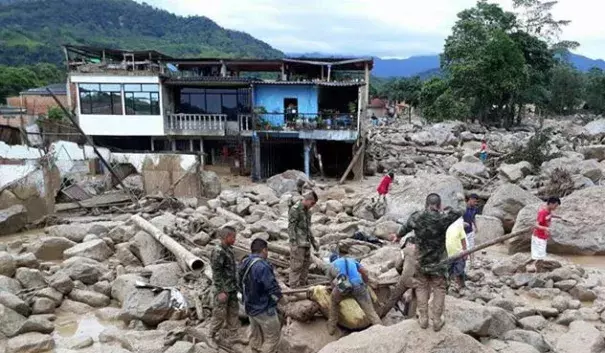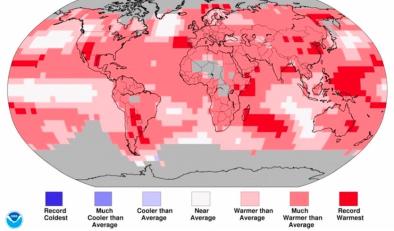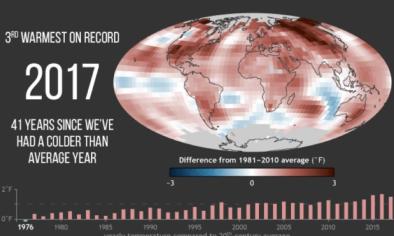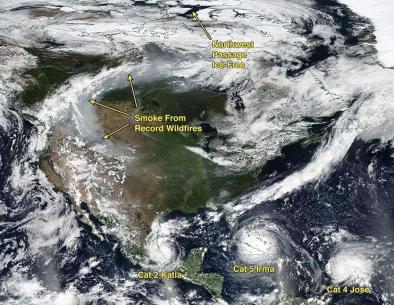April 2017: Earths 2nd Warmest April on Record

April 2017 was the planet's second warmest April since record keeping began in 1880, said NOAA's National Centers for Environmental Information (NCEI) on Thursday; NASA also rated April 2017 as the second warmest April on record. The only warmer April was just last year, in 2016. April 2017 ranked as the eighteenth warmest month (expressed as the departure of temperature from average) of any month in the global historical record in the NASA database. The extreme warmth of January 2017 (thirteenth warmest month of any month in NASA’s database), February 2017 (sixth warmest), March 2017 (fifth warmest) and now April gives 2017 an outside chance of becoming Earth’s fourth consecutive warmest year on record--if an El Niño event were to develop this summer and continue through the end of the year, as some models are predicting. It's more likely, though, that 2016 will remain as the warmest year in Earth's recorded history. For the year-to-date period of January–April 2017, Earth's temperature was 0.95°C (1.71°F) above the 20th century average of 12.6°C (54.8°F). This was the second highest such period since records began in 1880, behind 2016 by 0.19°C (0.34°F.)
Related Content






